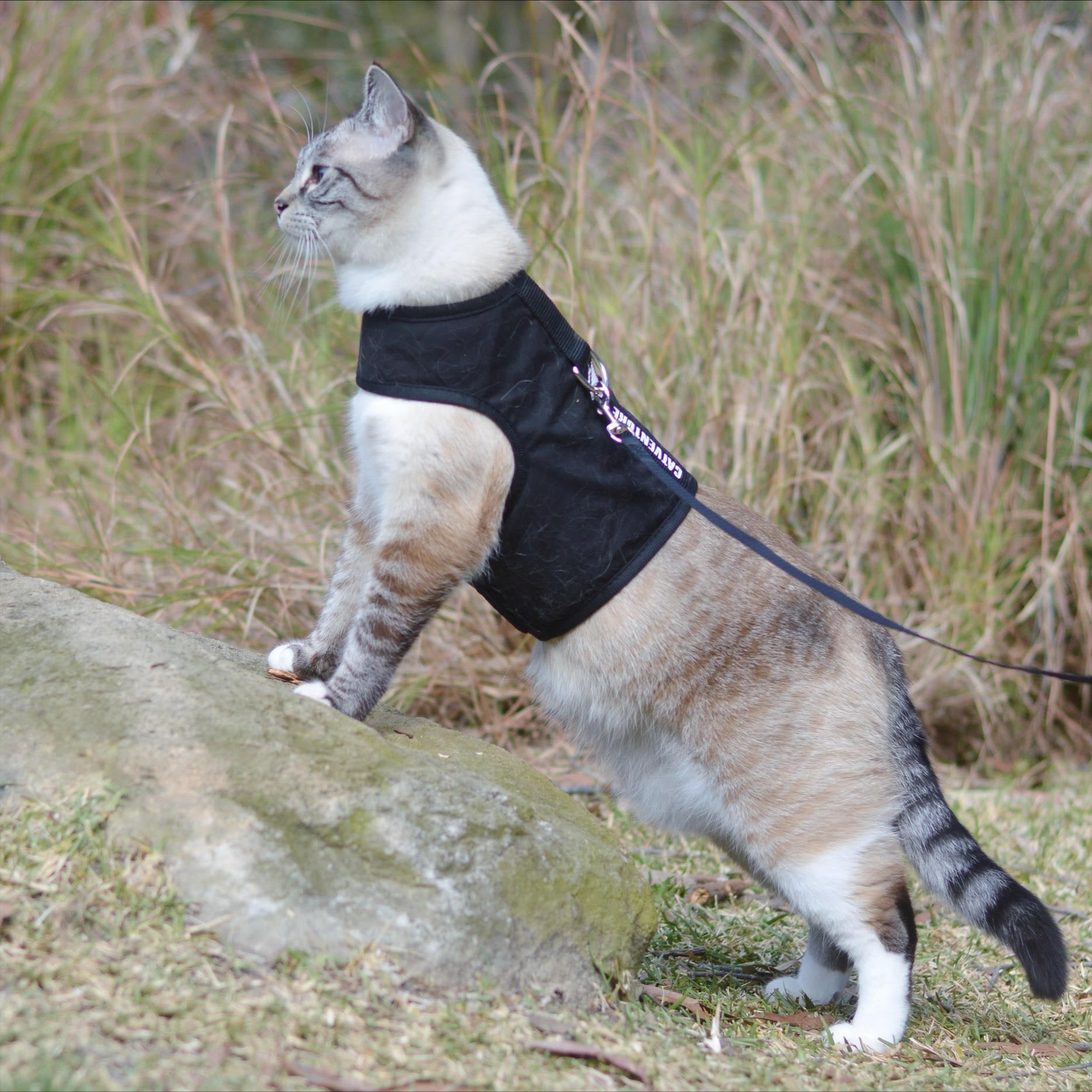Understanding the Difference: Feral vs. Stray Cats
One of the critical distinctions in the complex issue of cats in the Australian environment is the difference between feral and stray cats. While they might share some similarities, understanding their differences is crucial for developing targeted strategies.
Stray Cats: These are cats that have once been in human care. Whether they were abandoned or simply got lost, they still possess a degree of socialisation. Their familiarity with humans often means they gravitate towards urban areas, scavenging food from rubbish bins or relying on the kindness of strangers. Unlike feral cats, strays retain a memory of human interaction, which can be evident in their behaviours and responses to people.
Feral Cats: Born and raised without human contact, feral cats are entirely wild. Their behaviours are much like those of wild animals. While a stray cat might shyly approach humans, feral cats typically keep a wide berth. Their survival skills are honed to perfection, making them adept hunters capable of preying on various animals, from small insects to mammals.
The Impact of Feral Cats on the Australian Environment
Feral cats didn't always roam the vast landscapes of Australia. They were introduced by European settlers in the 1800s, and without natural predators to control their numbers, their population exploded. Today, they can be found across Australia, from coastal areas to the arid interior, even in some national parks and protected zones.
Predation: The predatory nature of feral cats is perhaps their most detrimental characteristic concerning native Australian fauna. Unlike native predators, who have evolved alongside their prey, feral cats are an anomaly. Their hunting techniques and behaviours are unfamiliar to many native species, making them particularly effective hunters. Birds, reptiles, amphibians, and mammals are all at risk. Recent studies show that feral cats play a significant role in the decline and even extinction of some native species.
Competition: Besides direct predation, feral cats also compete with native predators for food. This competition puts additional strain on native species, many of which are already struggling due to habitat loss and other environmental challenges.
Disease Transmission: Feral cats can carry diseases that might be transmitted to other wildlife, domestic animals, and even humans. Among these are the notorious Toxoplasma gondii parasite and the Feline Immunodeficiency Virus (FIV). The spread of such diseases can have cascading effects on ecosystems, affecting not only the direct victims but also the predators that rely on them for food.
Stray Cats and Their Separate Set of Challenges
While stray cats might seem less menacing than their feral counterparts, they present a different set of challenges. Strays, due to their familiarity with urban settings, are often found in close proximity to human habitats.
Population Growth: Stray cats have a high reproductive rate. A single pair of cats, given the right conditions, can result in thousands of offspring over a few years. These offspring, if not managed, can easily transition into the next generation of feral cats.
Human-Cat Conflict: Strays often wander into homes, businesses, and other establishments in search of food. While some people might feed and care for them, others might view them as nuisances, leading to potential conflicts. Strays can also cause road accidents and are at risk from human-related threats like poisoning or intentional harm.
Health Concerns: Just like feral cats, strays can harbour diseases. However, due to their proximity to human settlements, the risk of disease transmission to domestic pets or even humans is higher.
Addressing the Issues: Unique Strategies for Feral and Stray Cats
Understanding the nuanced differences between feral and stray cats helps guide more targeted and effective management strategies. Tailored solutions respect the unique needs and challenges each group represents.
Strategies for Managing Feral Cats
1. Habitat Rehabilitation: Ensuring that native species have robust and resilient habitats is one indirect way of combating the predatory pressure of feral cats. Dense vegetation and a healthy ecosystem can provide native fauna with hiding places and escape routes. Investing in habitat restoration is crucial. For instance, in the Northern Territory , efforts are being made to restore habitats to ensure a fighting chance for native species.
2. Biological Control: There's ongoing research into potential biological control methods for feral cats. While these have to be approached with caution to prevent unintended consequences, certain strains of the Toxoplasma gondii parasite, for instance, are being studied for their potential to reduce feral cat populations.
3. Eco-Friendly Fencing: Fenced-off areas or ‘safe zones’ can be created to protect vulnerable native species from predators, including feral cats. These zones can be breeding grounds and sanctuaries where endangered species can thrive without the constant threat of predation.
Strategies for Managing Stray Cats
1. TNR (Trap-Neuter-Return): This humane method involves trapping stray cats, neutering or spaying them, and then returning them to their territories. This process helps control the population growth of strays. Several organisations and communities in Australia have seen some success with this method, however, recent studies have shown there are several limitations to the TNR method which include the influx of new cats, welfare concerns, public perception, and the resource-intensive nature of TNR.
2. Community Cat Programs: By setting up community cat colonies, stray cats can be provided with shelter, food, and basic medical care. Not only does this approach help manage stray populations, but it also reduces human-cat conflicts in urban areas.
3. Education and Advocacy: Educating the public about the challenges stray cats face and how they can help is pivotal. When community members are informed about the stray cat issue, they're more likely to participate in humane solutions.
Supporting Rescues and the Need for More Resources
Rescue organisations play a pivotal role in addressing the stray cat challenge. Their efforts in trapping, neutering, and rehoming strays significantly reduce the strain on both the environment and local communities.
However, the sheer scale of the problem means that these organizations are often overwhelmed. A lack of funding, resources, and manpower hinders their operations. There's an urgent need for increased financial support, both from the government and the public. Additionally, partnerships between local businesses, like www.catharnessaustralia.com.au, and rescue organisations can foster community-centric solutions.
Moreover, while TNR and community cat programs are beneficial, they aren't universally applied across Australia. This inconsistency can lead to unmanaged pockets of stray populations. Uniform policies, backed by adequate resources, are crucial for a holistic and effective approach to the stray cat issue.
Broader Environmental Impacts and the Way Forward
While feral and stray cats undeniably impact the environment, it's essential to position their influence within the more extensive network of environmental challenges Australia grapples with. The issues facing our native wildlife are manifold. While stray and feral cats are a factor, several other environmental challenges are even more influential in shaping the state of Australia's rich biodiversity.
Expanding on the Environmental Challenges:
1. Deforestation: As cities expand and agricultural needs rise, forests are continually being cleared. The resulting habitat fragmentation and outright loss make survival increasingly precarious for native species.
2. Urbanisation: More than just the loss of habitats, urban sprawl results in higher instances of roadkill, pollution, and altered landscapes that many species find hard to adapt to.
3. Large-Scale Mining: The environmental repercussions of mining are profound. Habitats are destroyed, water sources are polluted, and non-native species are often inadvertently introduced, threatening native populations.
4. Climate Change: Global warming affects Australian fauna by changing their natural habitats, making food sources scarce and altering migration patterns.
5. Water Pollution: Chemical runoff from industries and agriculture enters waterways, negatively affecting aquatic life and the animals that rely on these water sources.
6. Invasive Species: Apart from cats, several other non-native species, such as the cane toad, have wreaked havoc on native ecosystems by preying on local species or outcompeting them for resources.
7. Overfishing: Overfishing in Australian waters affects the balance of marine ecosystems. This has cascading effects up the food chain, impacting larger predators and the overall health of our marine environment.
8. Bushfires: The recent unprecedented bushfires in Australia have shown just how vulnerable our wildlife is to such natural disasters, exacerbated by climate change.
9. Land Degradation: Poor agricultural practices lead to soil erosion, salinity, and desertification, impacting the food sources and habitats of many ground-dwelling species.
10. Pollution and Litter: From plastics in our oceans to chemical pollutants in the air, pollution affects all living creatures, including our native animals.
Towards a Comprehensive Solution:
Given the broad array of challenges, conservation efforts need to be comprehensive, collaborative, and adaptive. This means not merely focusing on the problem of feral and stray cats but also championing sustainable urban development, pushing for responsible agricultural and mining practices, and instigating powerful reforestation programs.
Embracing Responsible Cat Ownership:
Indoor Living and Controlled Outdoor Adventures: As cat owners, while we cannot single-handedly address all of Australia's environmental issues, we can play our part. Keeping cats indoors and allowing them controlled outdoor experiences using tools like harnesses can reduce their environmental impact. This small step contributes to a bigger picture, helping to ensure that the native fauna of Australia can thrive for generations to come.
Understanding the broader context of challenges faced by Australian fauna is key. It reinforces the idea that conservation is a shared responsibility. While adopting practices like responsible cat ownership is pivotal, there's also a pressing need to engage with larger environmental issues. It's not just about cats; it's about fostering a sustainable, harmonious balance with nature in every aspect of our lives.










